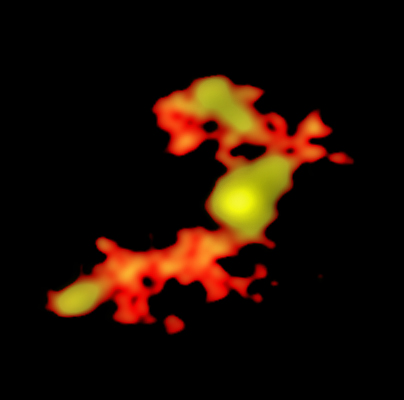
The Milky Way Is Warped in More Ways Than One
Astronomers mapping out luminous stars across our galaxy's disk found that the Milky Way is warped — and multiple factors are twisting its shape.

60-Second Astro News: A Carnivorous Quasar and a Galaxy Ghost
In astronomy news this week: The most luminous quasar known in the cosmos is devouring three galaxy companions, while a newly discovered ghostly satellite of the Milky Way hints at hordes more just waiting to be found.

Ancient Merger Wreckage in the Milky Way
Mounting evidence indicates that our galaxy smashed up another smaller galaxy roughly 10 billion years ago.

Some Stars Around Galaxy May Be From Elsewhere
Data from the Gaia satellite reveal 20 new high-speed stars, 13 of which appear to have originated outside of the Milky Way.

Pattern in Milky Way's Stars Suggests Recent Galactic Whack
An unexpected pattern in the Milky Way's disk of stars points to a recent whack from another galaxy.

Gaia Maps 1.7 Billion Stars, Widens Cosmic Census
With its second data release, the European Space Agency's Gaia satellite has redefined the way we look at our galaxy.

New Mass Estimate for the Milky Way
Astronomers have observed the motion of distant star clusters to measure our galaxy’s mass. The new estimate places the Milky Way in the lightweight class of galaxies.

Astronomers Map Milky Way in Incredible Detail
Astronomers have mapped neutral atomic hydrogen, which profuses the space between stars, in unprecedented detail to create a beautiful radio-wavelength portrait of the Milky Way.

What percentage of our galaxy’s stars move in retrograde orbits?
Do astronomers have any idea what percentage of our galaxy’s stars move in retrograde orbits? The short answer is yes, a very small percentage. But the long answer is more interesting. First, let’s agree what we mean by “retrograde.” If you were to look down on the solar system from…
